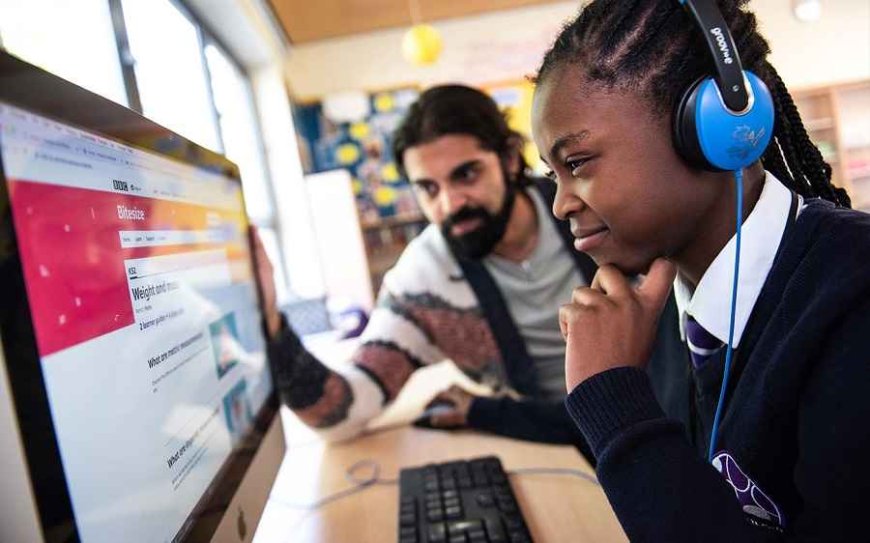Revolutionizing Education: Exploring the Latest Technologies in Learning
In today's rapidly evolving world, technology has become an integral part of our lives, transforming various aspects of society,

In today's rapidly evolving world, technology has become an integral part of our lives, transforming various aspects of society, including education. Traditional classrooms are being reshaped by innovative tools and technologies, enabling educators to create engaging and interactive learning experiences. In this article, we will delve into some of the latest technologies that are revolutionizing the field of learning.
Augmented Reality (AR):
Augmented Reality brings digital content into the real world, enhancing the learning experience by overlaying virtual elements onto the physical environment. AR applications enable students to interact with 3D models, explore historical sites, and conduct virtual experiments, making abstract concepts more tangible and understandable.
Virtual Reality (VR):
Virtual Reality immerses learners in a computer-generated environment, simulating real-world scenarios. By putting on VR headsets, students can travel back in time, explore distant planets, or dive into the human body, fostering experiential learning and deep engagement.
Gamification:
Gamification integrates game design elements into educational content to motivate and engage learners. Through interactive quizzes, leaderboards, and rewards, students are incentivized to actively participate, compete, and progress in their learning journeys.
Artificial Intelligence (AI):
Artificial Intelligence is revolutionizing education in multiple ways. AI-powered tutors and chatbots provide personalized learning experiences, adapt content to individual needs, and offer instant feedback. Intelligent analytics tools help educators assess student performance and identify areas for improvement.
Adaptive Learning:
Adaptive Learning systems leverage AI algorithms to tailor educational content and pace to each student's unique needs. By analyzing individual strengths and weaknesses, adaptive platforms provide personalized learning pathways, ensuring optimal learning outcomes for students of varying abilities.
Internet of Things (IoT):
The Internet of Things connects physical objects and devices, creating a networked learning environment. IoT-enabled devices, such as smartboards and wearable gadgets, enhance collaboration, enable real-time data collection, and promote interactive learning experiences.
Mobile Learning:
With the ubiquity of smartphones and tablets, mobile learning has gained significant traction. Mobile apps and platforms offer anytime, anywhere access to educational content, enabling students to learn at their own pace and convenience.
Blockchain in Education:
Blockchain technology ensures secure and tamper-proof records of educational achievements. It enables the creation of verifiable digital credentials, such as certificates and diplomas, fostering trust, and simplifying the verification process for employers and educational institutions.
Cloud Computing:
Cloud-based platforms provide scalable and flexible infrastructures for educational institutions. They facilitate seamless collaboration, data storage, and access to educational resources, eliminating the constraints of physical storage and enabling efficient knowledge sharing.
Robotics and Coding:
Integrating robotics and coding into the curriculum promotes computational thinking and problem-solving skills. Students learn to design, program, and control robots, fostering creativity, logical reasoning, and hands-on learning experiences.
Moreover, these technologies not only benefit students but also empower educators in their teaching practices. With access to real-time data and analytics, teachers can monitor individual student progress, identify areas where additional support is needed, and provide targeted interventions. This data-driven approach allows for personalized instruction, ensuring that each student receives the necessary guidance to succeed.
Furthermore, the integration of technology in learning transcends traditional boundaries, allowing for global collaboration and cultural exchange. Students can connect with peers from different parts of the world, engage in collaborative projects, and gain a broader perspective on global issues. This fosters cultural awareness, empathy, and cross-cultural communication skills, preparing students to thrive in a diverse and interconnected world.
As educational institutions embrace these latest technologies, challenges such as the digital divide and data privacy must be addressed. Ensuring equitable access to technology and bridging the gap between privileged and underserved communities is essential for creating an inclusive learning environment.
The latest technologies in learning are reshaping education, offering exciting possibilities for both students and educators. Augmented Reality, Virtual Reality, Artificial Intelligence, and other innovations are revolutionizing how knowledge is acquired, creating engaging and personalized learning experiences. By leveraging these technologies, we can unlock the potential of every learner, cultivate critical skills for the future, and pave the way for a more innovative and transformative educational landscape.
